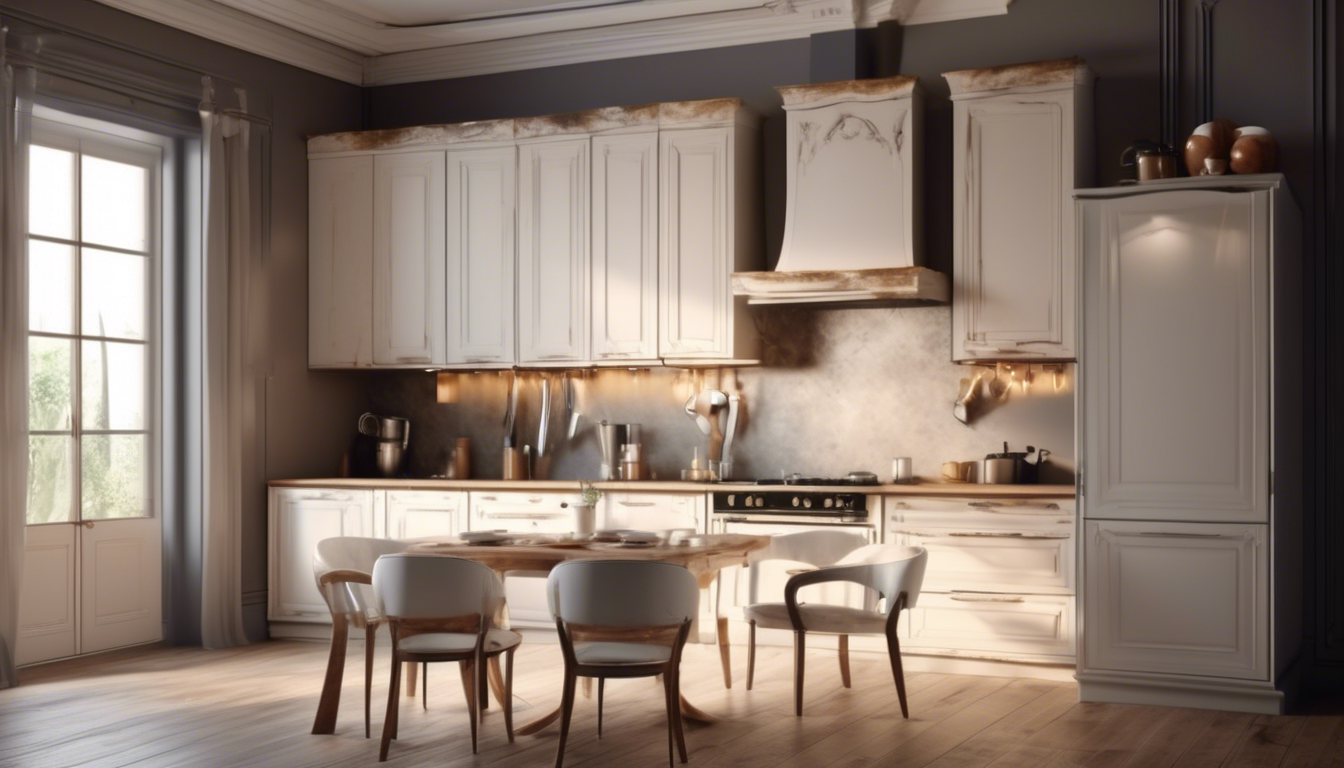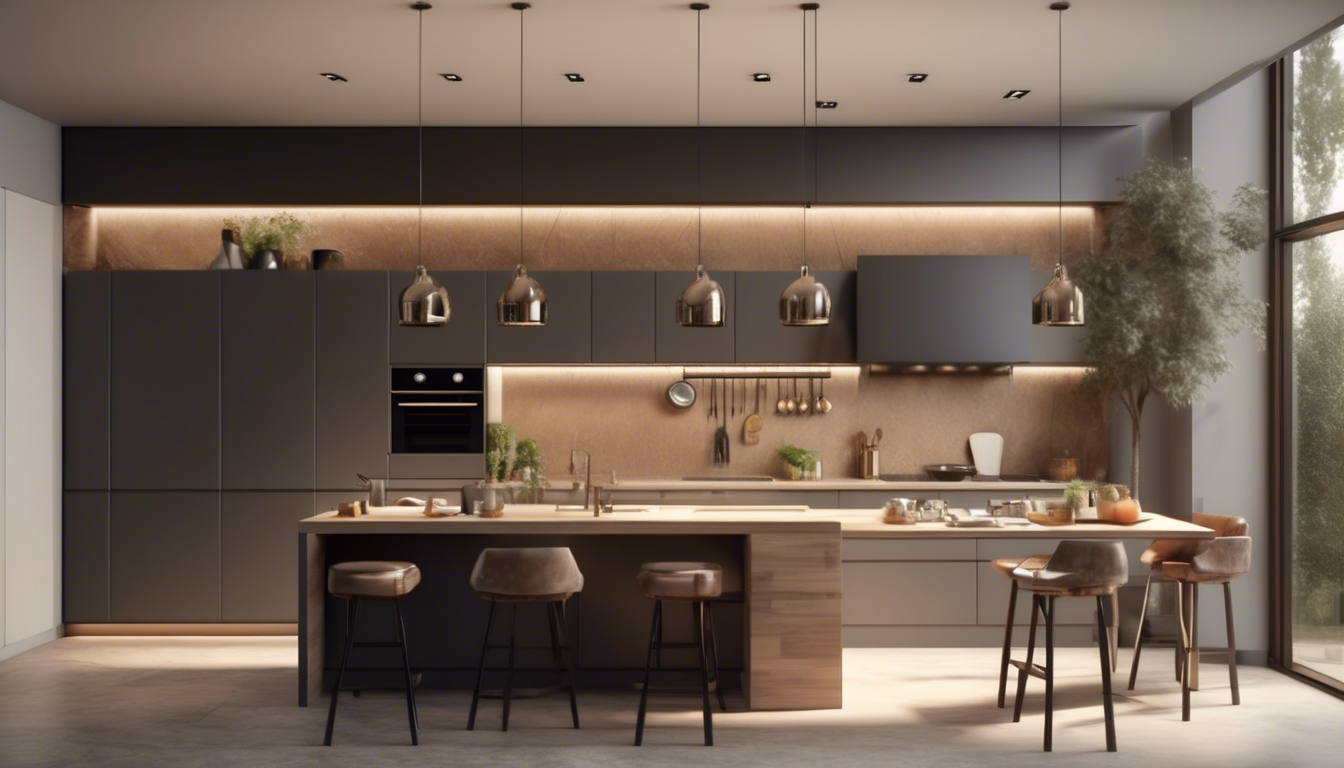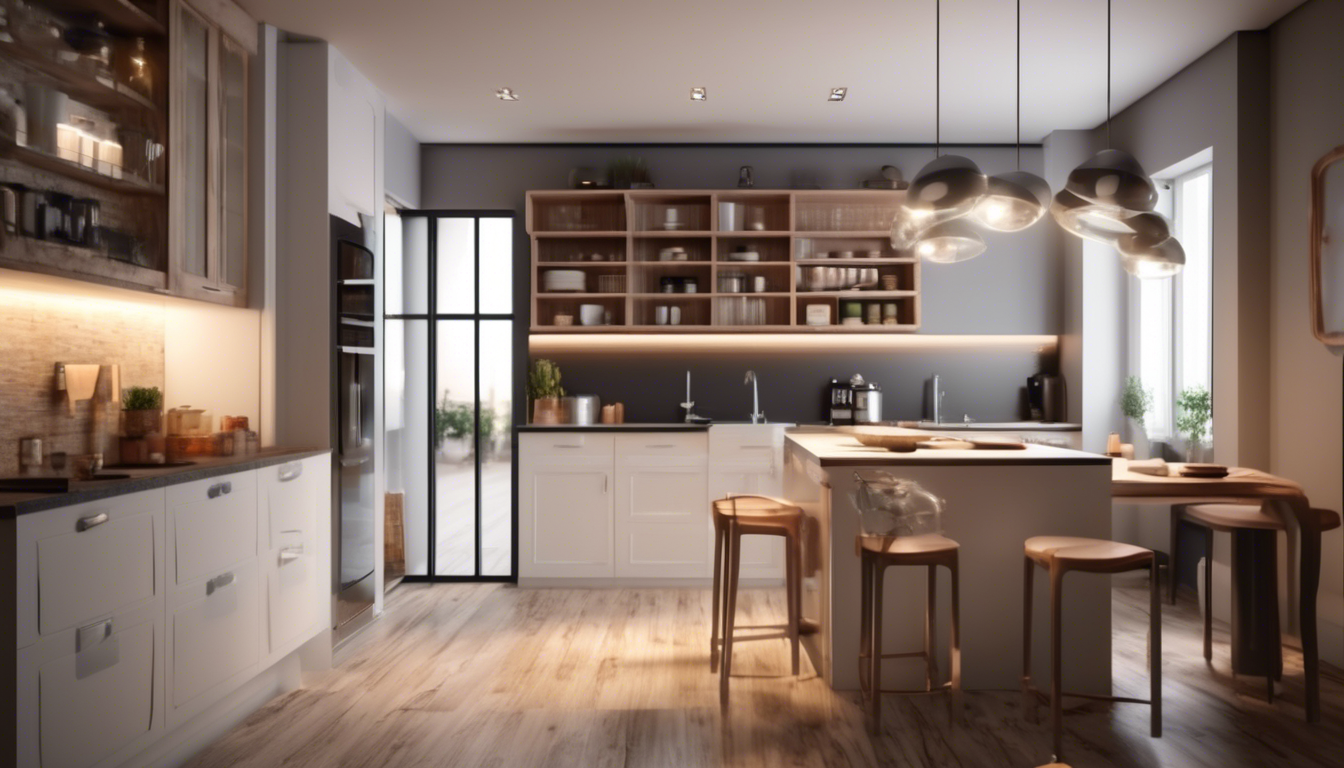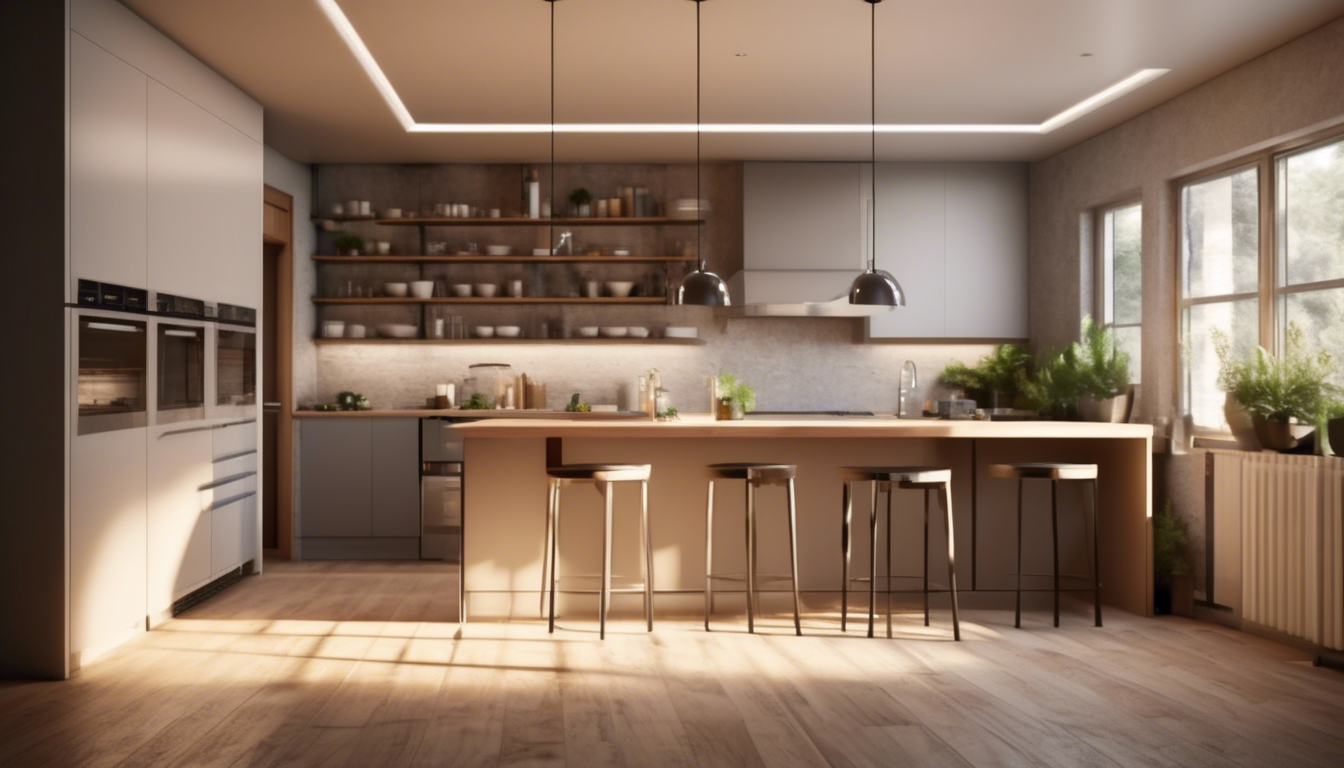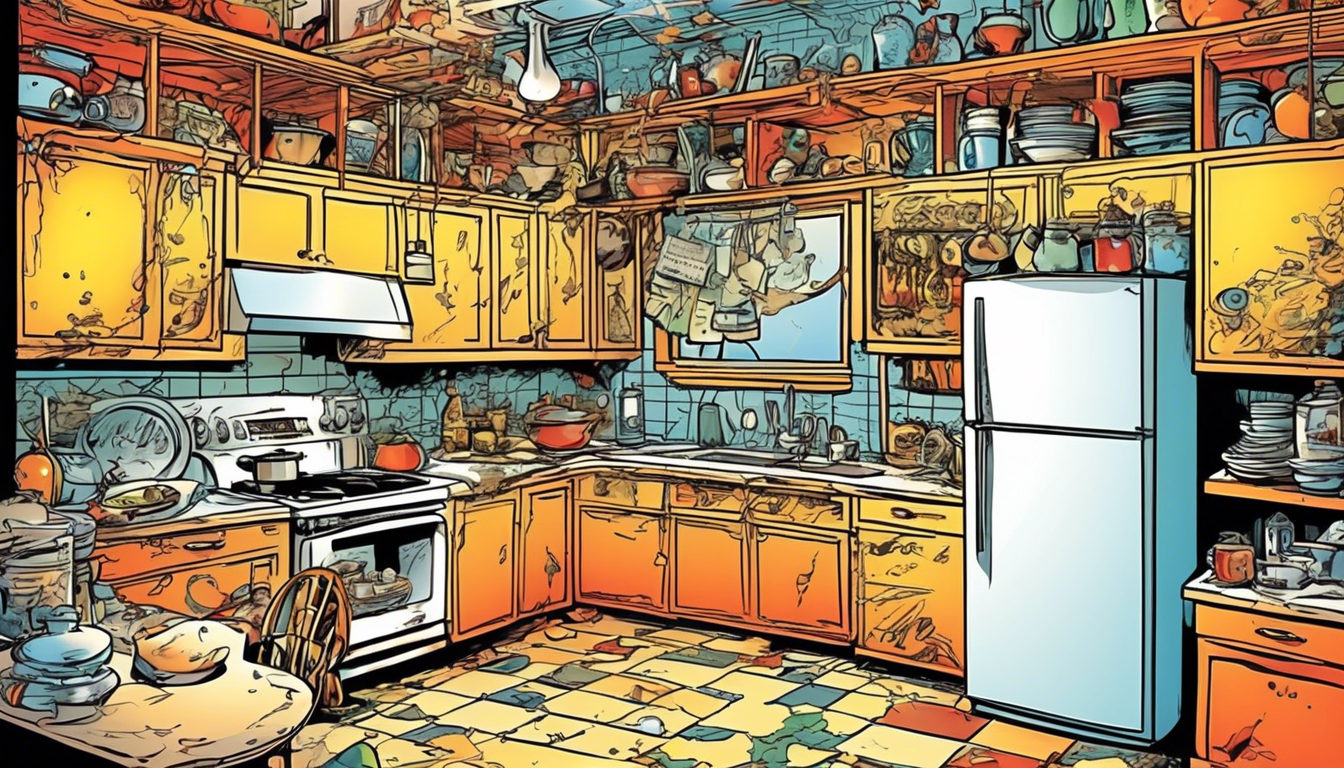Is $10,000 Enough For A Kitchen Remodel?
This page is about Is $10,000 Enough For A Kitchen Remodel?
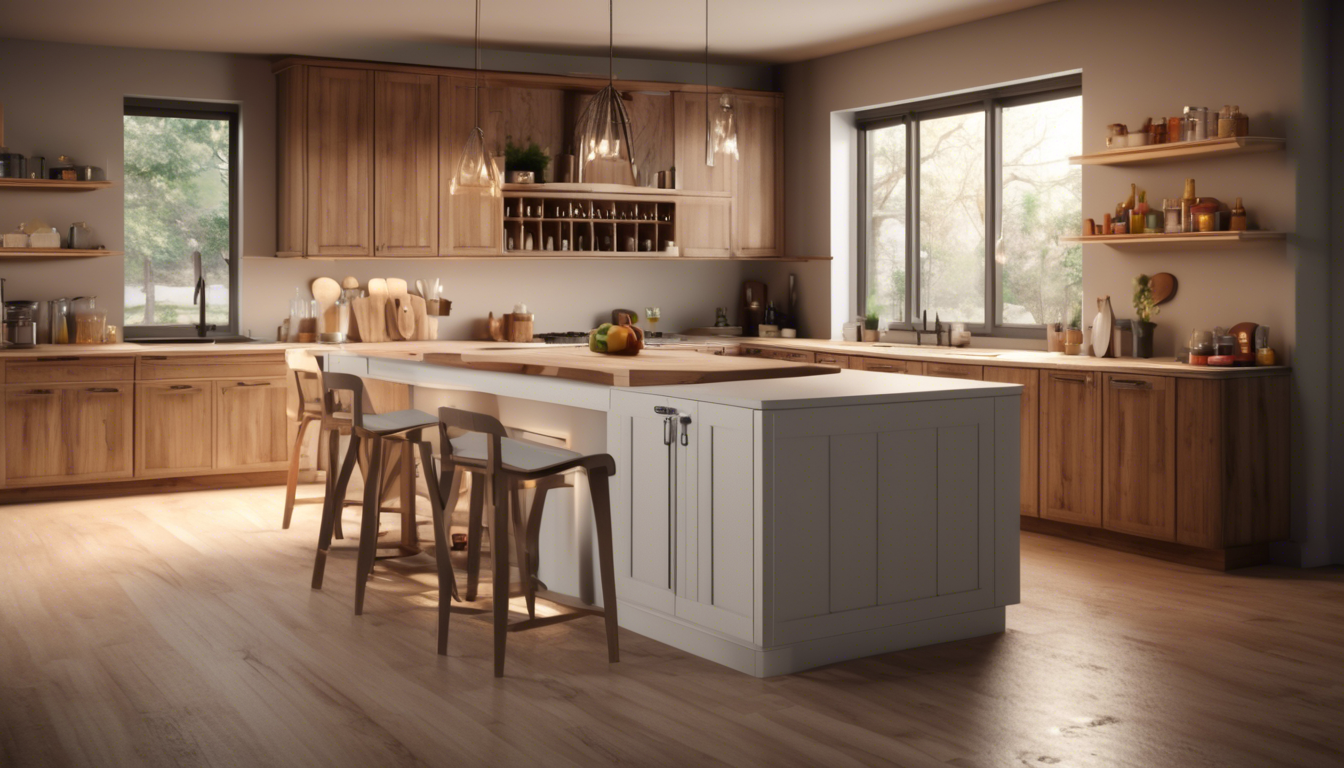
Is $10,000 enough for a kitchen remodel?
Understanding the Costs of a Kitchen Remodel
When considering a kitchen remodel, one of the first questions that often arises is the budget. A common figure that gets thrown around is $10,000, but is this amount sufficient to transform your kitchen into the space of your dreams? The answer to this question depends on various factors, including the scope of the remodel, the materials chosen, and the contractors hired.
Factors to Consider
Before determining whether $10,000 is enough for your kitchen remodel, it’s essential to understand the different cost factors involved. Some of the key components that can impact the overall cost of a kitchen renovation include:
1. Scope of the Project: The extent of the remodel plays a significant role in determining the total cost. A minor cosmetic update will likely cost less than a full-scale renovation that involves layout changes and new appliances.
2. Materials and Finishes: The quality of materials and finishes you choose can greatly impact the total cost. High-end materials will come at a higher price point compared to more budget-friendly options.
3. Labor Costs: Hiring professionals to handle the renovation will add to the overall expenses. The rates of contractors can vary based on their experience and reputation.
4. Unexpected Expenses: It’s essential to factor in unexpected costs that may arise during the remodel. Unforeseen issues such as structural problems or plumbing issues can increase the budget.
Strategies to Remodel on a $10,000 Budget
While $10,000 may seem like a modest budget for a kitchen remodel, it is still possible to achieve significant improvements with careful planning and strategic decisions. Here are some tips to help you make the most of a $10,000 budget:
1. Set Priorities: Identify the most critical aspects of your kitchen that require attention. Focus on essential updates such as new countertops, fresh paint, or lighting fixtures.
2. Consider DIY Options: If you’re handy with tools, consider tackling certain aspects of the remodel yourself. Tasks like painting cabinets or installing backsplash can help save on labor costs.
3. Shop Smart: Look for sales, discounts, and clearance items when purchasing materials and appliances. Consider lightly used or refurbished items to stretch your budget further.
4. Opt for Cost-Effective Materials: Choose materials that offer a good balance between quality and price. Laminate countertops, vinyl flooring, and mid-range appliances can help you stay within budget.
While $10,000 may not cover a full-scale luxury kitchen remodel, it can still make a noticeable difference in the appearance and functionality of your space. By carefully planning, prioritizing, and making strategic decisions, you can achieve a beautiful kitchen transformation within a modest budget. Remember to research thoroughly, get multiple quotes from contractors, and explore cost-saving alternatives to make the most of your $10,000 kitchen remodel budget.
Key considerations before starting a kitchen remodel
When it comes to embarking on a kitchen remodel, there are several key considerations that homeowners must keep in mind to ensure the project’s success. From setting a realistic budget to selecting the right design elements, thoughtful planning is essential. By taking the time to carefully think through each aspect of the remodel, homeowners can avoid potential pitfalls and achieve their desired results. Here are some crucial factors to consider before starting a kitchen remodel:
Setting a Realistic Budget
One of the first steps in any kitchen remodel is establishing a budget. The question of whether $10,000 is enough for a kitchen remodel largely depends on the scale of the project and the specific renovations being undertaken. While $10,000 may cover minor updates such as new countertops or a fresh coat of paint, more extensive remodels involving cabinetry, appliances, and flooring may require a higher budget. It is crucial to outline a clear budget that takes into account all potential expenses to avoid overspending midway through the project.
Defining Your Goals
Before diving into a kitchen remodel, homeowners should clearly define their goals for the project. Whether the aim is to create a more functional space for cooking and entertaining or to increase the home’s resale value, understanding these objectives will help guide the renovation process. By having a clear vision of what you hope to achieve with the remodel, you can make informed decisions about design choices, materials, and layout changes.
Assessing Your Needs
Consider how you currently use your kitchen and identify any pain points that you would like to address through the remodel. If lack of storage is an issue, prioritizing the addition of cabinets or pantry space may be essential. For those who love to cook and bake, investing in high-quality appliances and ample countertop workspace could be a priority. Tailoring the remodel to suit your specific needs will ensure that the end result is not only aesthetically pleasing but also highly functional.
Hiring the Right Professionals
While some homeowners may opt for a DIY approach to kitchen remodels, enlisting the help of experienced professionals can streamline the process and ensure exceptional results. From architects and interior designers to contractors and electricians, assembling a reliable team of experts is key to a successful remodel. Researching potential candidates, checking references, and reviewing portfolios can help homeowners find professionals who align with their vision and budget.
Selecting Quality Materials
The quality of materials used in a kitchen remodel can greatly impact the overall outcome of the project. Investing in durable, high-quality materials such as solid wood cabinets, quartz countertops, and stainless steel appliances can enhance both the aesthetic appeal and functionality of the space. While it may be tempting to cut costs by opting for cheaper materials, choosing quality materials can result in a kitchen that not only looks beautiful but also stands the test of time.
Undertaking a kitchen remodel is a significant undertaking that requires careful planning and consideration. By setting a realistic budget, defining your goals, assessing your needs, hiring the right professionals, and selecting quality materials, you can ensure that your kitchen remodel is a success. Whether you are looking to create a modern culinary oasis or a cozy family gathering space, thoughtful planning and attention to detail are key to achieving the kitchen of your dreams.
Cost-effective ways to enhance your kitchen design
Kitchen design plays a pivotal role in enhancing the overall aesthetic appeal and functionality of a home. While a full kitchen remodel can be a significant investment, there are cost-effective ways to upgrade your kitchen design without breaking the bank. By strategically incorporating budget-friendly enhancements, you can achieve a fresh and stylish look for your kitchen space. Let’s explore some innovative ideas to transform your kitchen without splurging a fortune.
Strategic Lighting Upgrades for a Brighter Space
Optimizing the lighting in your kitchen can have a profound impact on its ambiance and functionality. Consider installing energy-efficient LED bulbs to brighten up the space and create a more inviting atmosphere. You can also add task lighting under cabinets to improve visibility while cooking. These lighting upgrades can provide a cost-effective solution to enhance the overall appeal of your kitchen.
Revamp Your Cabinets with a Fresh Coat of Paint
Updating your kitchen cabinets with a fresh coat of paint can instantly rejuvenate the entire space. Choose a trendy color that complements your existing decor scheme and gives your kitchen a modern look. Additionally, consider replacing old hardware with contemporary knobs and handles to further enhance the visual appeal of your cabinets. This budget-friendly makeover can make a significant difference in your kitchen design.
Economical Countertop Transformations
While natural stone countertops can be expensive, there are budget-friendly alternatives to achieve a similar look. Consider opting for laminate countertops that mimic the appearance of granite or quartz at a fraction of the cost. Another option is to explore concrete countertops, which offer a modern and customizable aesthetic. These economical countertop transformations can elevate the style of your kitchen without exceeding your budget.
Creative Backsplash Solutions for a Stylish Touch
Adding a decorative backsplash is a creative way to enhance the visual appeal of your kitchen. You can choose from a variety of budget-friendly materials such as peel-and-stick tiles, subway tiles, or even reclaimed wood to create a unique backsplash design. By incorporating a stylish backsplash, you can infuse personality into your kitchen space and achieve a high-end look without a hefty price tag.
Upgrade Your Appliances for Efficiency and Style
Investing in new kitchen appliances can not only enhance the functionality of your space but also elevate its design aesthetic. Look for energy-efficient appliances that not only save you money in the long run but also contribute to a modern and cohesive look in your kitchen. Stainless steel appliances, in particular, offer a sleek and timeless appearance that complements various decor styles.
Enhancing your kitchen design on a budget is not only achievable but also a rewarding endeavor. By strategically incorporating cost-effective upgrades such as lighting improvements, cabinet makeovers, countertop transformations, creative backsplashes, and appliance upgrades, you can elevate the look and feel of your kitchen without exceeding a $10,000 budget. These innovative ideas enable you to create a stylish and functional kitchen space that reflects your unique personality and enhances your overall home environment.
Maximizing space and functionality in a kitchen renovation
Kitchen renovation projects often come with the challenge of maximizing space and functionality without compromising on style. When embarking on a kitchen remodel, homeowners aim to create a space that is not only visually appealing but also practical and efficient. With the right planning and design strategies, it is possible to achieve a kitchen that is both aesthetically pleasing and highly functional.
Importance of Space Optimization in Kitchen Renovation
In a kitchen renovation project, space optimization is crucial for creating a functional and efficient layout. Maximizing the available space allows for better organization, ease of movement, and improved workflow. By carefully planning the layout and storage options, homeowners can make the most of every inch of their kitchen, regardless of its size.
Strategic Planning for Space Efficiency
Before starting a kitchen renovation project, it is essential to assess the existing layout and identify areas that can be optimized for better functionality. Consider the traffic flow within the kitchen, the placement of key elements such as the sink, stove, and refrigerator, and the availability of storage space. Strategic planning is key to making the most of the available space and ensuring that the kitchen meets the specific needs of the homeowners.
Utilizing Vertical Space
When space is limited, utilizing vertical space can help maximize storage and functionality in the kitchen. Installing tall cabinets that reach the ceiling provides additional storage space for items that are used less frequently. Floating shelves or racks can also be mounted on walls to store cookware, utensils, or decorative items, freeing up valuable counter and cabinet space.
Multi-Functional Design Solutions
Integrating multi-functional design solutions is another effective way to optimize space in a kitchen renovation. For example, incorporating a kitchen island with built-in storage or seating can serve multiple purposes while saving space. Choosing appliances that are compact or have dual functionalities can also help maximize the available space without compromising on convenience.
Efficient Storage Options
An essential aspect of maximizing space in a kitchen renovation is choosing efficient storage options. Pull-out drawers, rotating carousels, and adjustable shelving systems can make it easier to access items and maximize storage capacity. Customized storage solutions tailored to the specific needs of the homeowners can help keep the kitchen organized and clutter-free.
Maximizing space and functionality in a kitchen renovation requires thoughtful planning, strategic design solutions, and efficient storage options. By optimizing space, utilizing vertical storage, incorporating multi-functional design elements, and selecting the right storage solutions, homeowners can create a kitchen that is both beautiful and practical. A well-designed kitchen that maximizes space and functionality can enhance the overall cooking experience and add value to the home.
Trends in kitchen remodeling for modern homes
There has been a significant shift in kitchen remodeling trends for modern homes in recent years. Homeowners are increasingly looking to create functional and stylish spaces that cater to their lifestyle needs. From innovative technology integration to sustainable materials, the focus is on combining aesthetics with practicality. Let’s delve into some of the key trends shaping the landscape of kitchen remodeling today.
Smart Technology Integration: Enhancing Convenience and Efficiency
Smart technology has revolutionized the way kitchens are designed and operated. From smart appliances such as refrigerators with built-in touchscreens to voice-activated assistants that control lighting and temperature, technology is seamlessly integrated into modern kitchen spaces. These advancements not only enhance the convenience and efficiency of daily tasks but also add a touch of sophistication to the overall design.
Open Concept Layouts: Creating Spacious and Multifunctional Areas
Open concept layouts continue to gain popularity in kitchen remodeling projects. By removing barriers such as walls and partitions, homeowners can create spacious and multifunctional areas that seamlessly blend the kitchen with the living and dining spaces. This design approach not only fosters connectivity and interaction but also maximizes natural light, giving the kitchen a bright and airy feel.
Sustainable and Eco-Friendly Materials: Embracing Green Design Practices
With a growing emphasis on sustainability, many homeowners are opting for eco-friendly materials in their kitchen remodels. From bamboo flooring to reclaimed wood cabinetry, there is an increased focus on reducing the environmental impact of renovation projects. Energy-efficient appliances, water-saving fixtures, and recycled glass countertops are just a few examples of how green design practices are being incorporated into modern kitchens.
Statement Lighting Fixtures: Adding Elegance and Personality
Lighting plays a crucial role in setting the mood and enhancing the visual appeal of a kitchen. Statement lighting fixtures, such as pendant lights and chandeliers, are becoming popular choices for adding elegance and personality to the space. These eye-catching fixtures not only provide functional illumination but also serve as design focal points that elevate the overall aesthetic of the kitchen.
Bold Colors and Textures: Making a Style Statement
While white kitchens have long been a classic choice, there is a growing trend towards incorporating bold colors and textures into modern kitchen designs. From vibrant cabinetry hues to textured backsplashes, homeowners are embracing daring choices to make a style statement. Mixing and matching different materials and finishes add depth and visual interest to the kitchen, creating a dynamic and personalized space.
The trends in kitchen remodeling for modern homes are driven by a harmonious blend of technology, sustainability, design aesthetics, and personalization. By incorporating these key elements into their projects, homeowners can create stunning and functional kitchen spaces that cater to their unique needs and reflect their individual style preferences.
Key Takeaway:
When considering a kitchen remodel with a budget of $10,000, it’s essential to approach the project strategically to achieve the best results. Before starting the renovation, homeowners must carefully evaluate key considerations to ensure a successful outcome within the budget constraints. By exploring cost-effective ways to enhance the kitchen design, maximizing space and functionality, and incorporating modern trends, it is possible to create a stylish and functional kitchen without overspending. Prioritizing these aspects can help homeowners make informed decisions and achieve a successful kitchen remodel that meets both their design preferences and financial limitations.
Conclusion
Embarking on a kitchen remodel with a budget of $10,000 is indeed possible with careful planning and strategic decision-making. By considering key factors before starting the project, such as setting priorities, establishing a clear vision, and researching cost-effective design solutions, you can maximize the value of your investment. From incorporating trendy elements to optimizing space and functionality, there are numerous ways to transform your kitchen into a modern and stylish space without breaking the bank.
When it comes to kitchen remodeling, it’s essential to strike a balance between aesthetics, functionality, and budget. By exploring cost-effective design options such as updating finishes, refacing cabinets, and incorporating affordable yet stylish decor elements, you can achieve a high-end look without overspending. Additionally, focusing on maximizing space and functionality through strategic layout changes, storage solutions, and efficient organization can significantly enhance the overall functionality of your kitchen.
In recent years, the kitchen has evolved into the heart of the home, reflecting modern lifestyles and design preferences. From sleek minimalist designs to warm and cozy farmhouse aesthetics, there are various trends in kitchen remodeling to consider for your next project. Whether you opt for a timeless classic look or embrace innovative technology and eco-friendly materials, staying informed about the latest trends can inspire you to create a space that is both on-trend and functional.
A successful kitchen remodel is not solely about the budget; it’s about thoughtful planning, creative design choices, and prioritizing what matters most to you. By carefully considering key factors, exploring cost-effective solutions, maximizing space and functionality, and staying informed about current trends, you can achieve a stunning kitchen transformation that aligns with your style, needs, and budget. Remember, a well-executed kitchen remodel has the potential to enhance your living experience, add value to your home, and create a space where lasting memories are made.
If you need a tree service in Utah, you can call:
Truco Services, Inc.
4640 Commerce Drive
Murray, Utah 84107
(801) 466–8044
https://truetreeservices.com/
[geocentric_weather id=”45ff4ccd-3d3f-498e-b0b9-91aaaf766bc4″]
[geocentric_about id=”45ff4ccd-3d3f-498e-b0b9-91aaaf766bc4″]
[geocentric_neighborhoods id=”45ff4ccd-3d3f-498e-b0b9-91aaaf766bc4″]
[geocentric_thingstodo id=”45ff4ccd-3d3f-498e-b0b9-91aaaf766bc4″]
[geocentric_busstops id=”45ff4ccd-3d3f-498e-b0b9-91aaaf766bc4″]
[geocentric_mapembed id=”45ff4ccd-3d3f-498e-b0b9-91aaaf766bc4″]
[geocentric_drivingdirections id=”45ff4ccd-3d3f-498e-b0b9-91aaaf766bc4″]
[geocentric_reviews id=”45ff4ccd-3d3f-498e-b0b9-91aaaf766bc4″]
